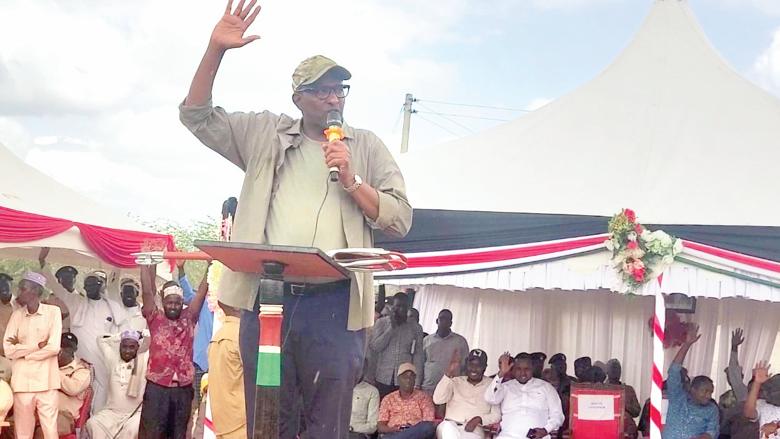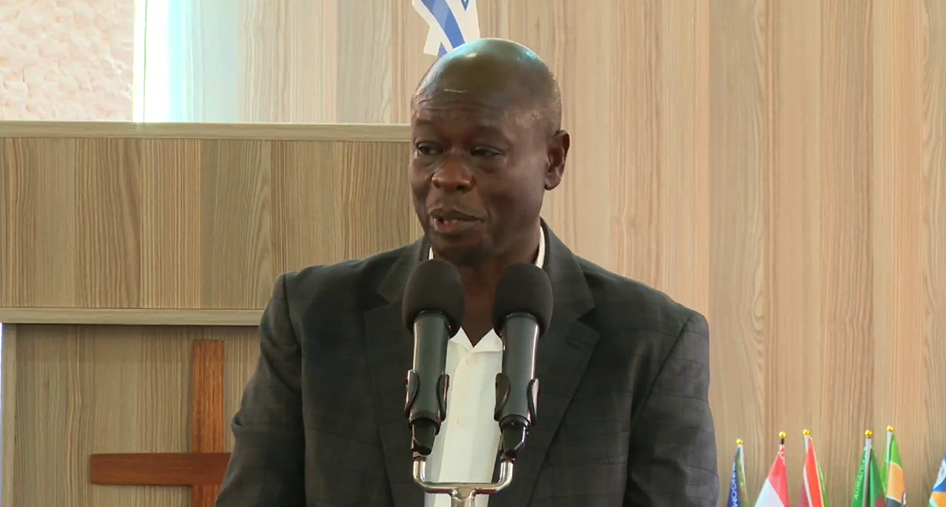Why al Shabaab attacks are back in North Eastern

Four Demoralised officers and failure by the government to facilitate operations are being cited as some of the factors contributing to the resurgence of terror attacks in parts of the North Eastern region.
This, coupled with obsolete equipment used by the security forces, failure to change tact and the onslaught against the terrorist group by the combined team of African Union Transition Mission in Somalia (ATMIS) and United States forces, have seen increased attacks in the region.
Experts are also questioning Kenya’s decision to reopen its border with Somalia as well as the strategy to deal with al Shabaab using “kid gloves”.
Highly placed sources in government blame President William Ruto’s administration for undertaking changes within the Directorate of Military Intelligence (DMI) and the National Intelligence Service (NIS) simultaneously.
At the DMI, Brigadier Abdulkadir Mohammed Burje was promoted to a Major General and elevated to be the head as former Director of Public Prosecutions (DPP) Noordin Haji was appointed the NIS Director General.
“This simultaneous changes left some void that the terrorist group has taken advantage of to launch attacks. We just hope that the two appointees will settle down fast and find a good working synergy between the two offices,” a senior intelligence officer told People Daily yesterday.
For the last three months, counties bordering Somalia, including, Lamu, Garissa and Mandera have witnessed an upsurge in terrorist attacks that left several members of security agencies and civilians dead.
In the last one month alone, al Shabaab has carried out at least 10 attacks in Garissa, Wajir and Mandera, leaving more than 30 security officers dead.
At least 22 officers have died in the last two weeks in Garissa and Lamu counties, while one suspected attacker was arrested last Thursday on the Garissa-Dadaab Road by a multi-agency team.
“They have become bolder. They are almost everywhere in parts of Lamu, Garissa and Mandera where they are staging attacks. The government must revise strategies to deal with them,” a senior police officer told People Daily.
On Tuesday, an Improvised Explosive Device (IED) hit a Kenya Police Service vehicle escorting a PSV bus at Tarbi area in Guba ward in Mandera, killing three officers and injuring five.
The previous day, the terrorist group reportedly attacked a camp in Tarbi, leaving several police officers injured.
On June 13, eight security officers died in a landmine explosion in Bodhei village, Garissa County, while six days earlier, a Land Rover ferrying officers from Alungu to Elwak in Mandera was hit by an IED that had been planted on the road killing one officer and injuring six.
Atmis attack
On June 2, two police officers who were on patrol along Elele-Takaba Road were killed while six were injured when they were hit by a rocket propelled grenade.
This week, Defence Cabinet Secretary Aden Duale, who was accompanied by Interior Principal Secretary Raymond Omollo, said the government will modernize Kenya Defence Forces’ (KDF) and police’ artillery in a renewed effort to contain al-Shabaab in Kenya and Somalia.
The equipment will include sophisticated armoured personnel carriers with the ability to detect improvised explosive devices.
Speaking during a public baraza in Masalani town after meeting elders and community leaders on Tuesday, Duale said the government will in the next three months buy sophisticated equipment to help the police and the KDF in the fight against al Shabaab.
The Al Qaeda-affiliated militia group attacked an Atmis base in Buulo Mareer in Shabelle on May 26.
Estimated to be in their hundreds, the terrorists stormed a Uganda People’s Defence Force camp with vehicle-borne explosive devices and suicide bombers and killed more than 50 soldiers and kidnapped others.
Mandera County Commissioner Amos Mariba attributes the rising raids to the high presence of militants in the county due to an ongoing crackdown in Somalia.
The crackdown, according to Mariba, had forced the militants to flee to Kenya.
“They are running away from the onslaught initiated by Atmis that comprises Kenyan forces, and the US special forces. They are coming to hide in Kenya,” Mariba told People Daily by phone.
And speaking to PD yesterday, Machakos Deputy Governor Francis Mwangangi, an expert in international relations, said the government’s decision to re-open the Kenya-Somalia border had two effects.
Mwangangi said the reopening of the border had allowed the militia and their families free movement and sharing of information across the two countries.
Lenient
Secondly, Mwangangi said, some cartels who have hitherto benefitted from illegal trade across the borders could be using the militants to instil fear in government agencies since they are not ready to pay taxes.
“Some cartels who have been engaging in goods smuggling from Kismayo to Eastleigh in Nairobi could be opposed to the reopening of the border and are, therefore, sponsoring the attacks to cause fear and panic,” Mwangangi said.
A senior KDF officer stationed in Garissa who did not want to be named due to the sensitivity of the matter, claimed the Kenya Kwanza administration had not been as firm on al-Shabaab as the two previous governments.
“Unlike the past two governments that did not want anything to do with al-Shabaab, there are certain personalities within the government who think we should use dialogue with the militia. They are out to do business with various parties in Somalia, the militia included ,” said the senior KDF officer.
Security sources confided in the PD team that failure by the government to facilitate officers stationed in the region with adequate resources, particularly money, had made it difficult for them to buy information from the locals.
“The money that we used to pay informers for intelligence has not been released since the beginning of the year. Do they expect us to use our money to buy intelligence?” a senior officer asked.
Some collaborators also provide shelter, food, transport and information to the militants.
Besides lack of financial facilitation, sources say most of the officers stationed in the insecurity prone areas are demoralised because they were posted there on disciplinary grounds.
“Most of the officers are aged and feel frustrated after overstaying in the regions they were deployed on disciplinary grounds. The government does not have any incentive or motivation for the officers,” said one officer.
Officers on the ground also want the government to equip them with new modern equipment, and in particular, replace the current Armoured Personnel Carriers (APCs) and Mine Resistant Ambush Protected Vehicles that have often been torn apart by IEDs.









